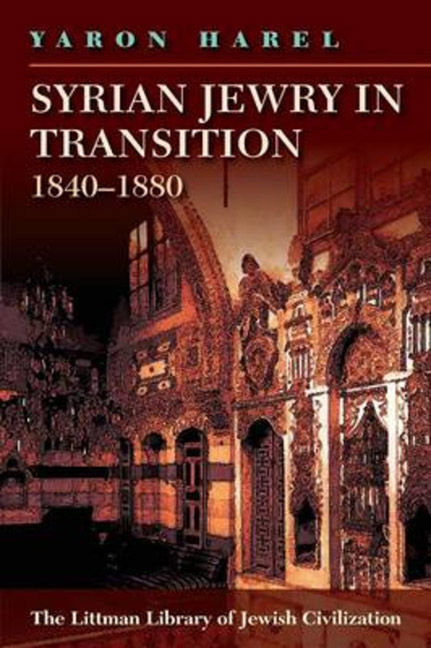Book contents
- Frontmatter
- Preface to the English Edition
- Dedication
- Contents
- Note on Transliteration and Conventions Used in the Text
- List of Abbreviations
- Introduction
- PART I THE SEEDS OF CHANGE
- PART II INTERNAL JEWISH LIFE
- 2 The Jewish Population of Syria
- 3 The Jews in the Local Economy
- 4 Leadership and Communal Administration
- 5 Education–Traditional and Modern
- PART III THE LEGAL STATUS OF THE JEWS
- PART IV MUSLIMS, CHRISTIANS, JEWS
- PART V TURNING TO THE WEST
- Conclusion: An Era of Transition
- Glossary
- Bibliography
- Index
5 - Education–Traditional and Modern
from PART II - INTERNAL JEWISH LIFE
- Frontmatter
- Preface to the English Edition
- Dedication
- Contents
- Note on Transliteration and Conventions Used in the Text
- List of Abbreviations
- Introduction
- PART I THE SEEDS OF CHANGE
- PART II INTERNAL JEWISH LIFE
- 2 The Jewish Population of Syria
- 3 The Jews in the Local Economy
- 4 Leadership and Communal Administration
- 5 Education–Traditional and Modern
- PART III THE LEGAL STATUS OF THE JEWS
- PART IV MUSLIMS, CHRISTIANS, JEWS
- PART V TURNING TO THE WEST
- Conclusion: An Era of Transition
- Glossary
- Bibliography
- Index
Summary
AS IN THE ELECTION of chief rabbis and the communal administration, so in education the wealthy elites, including the Francos, exercised decisive influence within the Jewish communities of Syria. Throughout the period under examination here the majority of Jewish boys continued to study in traditional frameworks; nonetheless, these years also saw a rising number of students enrolling in the modern schools for boys established by the Alliance Israélite Universelle and the foundation of Alliance institutions for girls. The process of introducing modern educational institutions illustrates once again how divisions within the Jewish community affected Jewish life in Syria.
Elementary Education
Kuttabs
In 1840 no signs of modern pedagogy were discernible in the rigid, tradition bound framework of Jewish education in Syria. As a religious minority, Syrian Jews feared the penetration of external influences that threatened their identity. In seeking to preserve its traditional communal structure, Jewish society placed not the individual but the community at the centre of its educational system. The aim was to provide each child and youth with the ability to function undeviatingly within the traditional communal frameworks, thereby ensuring their preservation and continuity, rather than to encourage a search for potentially hazardous new horizons or revolutionary change.
By and large, the educational system reflected the existing communal social stratification described in earlier chapters. The children of the poor studied in communal institutions and the children of the elites received private education. In the early 1840s Damascus had one communal talmud torah, also known by the Arabic term kuttab, divided into ten classes. In each class some twenty-five to sixty pupils—ranging in age from 3 to 13—sat on the floor in crowded, unfurnished rooms. Prayer books, the Pentateuch, and talmudic tractates were the only textbooks. At times an entire class shared a single volume, with each pupil approaching the teacher's desk to read a few sentences in turn, or the book being passed from pupil to pupil. Biblical and talmudic passages, studied in the original language only, formed the basis of the curriculum, alongside a focus on prayer and synagogue services, the linchpin of Jewish male social solidarity. Secular studies, including the local Arabic language, had no part in the curriculum. Thus, as compared to the children of the wealthy, whose parents could pay for more advanced private lessons, the children of the poor who generally populated the kuttabs remained relatively ignorant.
- Type
- Chapter
- Information
- Syrian Jewry in Transition, 1840–1880 , pp. 77 - 94Publisher: Liverpool University PressPrint publication year: 2010

